Home / Buddhas and Bodhisattvas
Buddhas and Bodhisattvas
The historical Buddha, Siddhartha, was born as a prince and is often referred to as Shakyamuni. He lived between the fifth and fourth centuries BCE in the area of today’s Indian states of Bihar and Uttar Pradesh. The earliest signs of Buddhism in Gandhara are two rock-cut edicts commissioned by the Mauryan king Ashoka during the third century BCE. The oldest surviving Buddhist artworks and inscriptions on reliquaries in Gandhara, however, date from around the time of the birth of Christ.
Early Buddhist images avoided showing the Buddha as a human figure; instead he was alluded to with symbols. Some of these symbols, such as the footprint pictured below, continued to be used even after the Buddha had been depicted in human form. By approximately the second century CE, making and dedicating independent statues of the Buddha became an established practice.
Much can be learned about Gandharan Buddhism from the depictions of the Buddha and related beings that survive today. Buddhism in the region was truly multi-faceted and images of the Buddha changed considerably over the course of Kushana reign, most notably with an increasing emphasis on the transcendent nature of the Buddha. Many of the concepts characteristic of Mahayana Buddhism—the form of Buddhism which later spread widely across East Asia—appear to have developed in Gandhara. These sometimes show the Buddha as deified or multiplied. For the first time, bodhisattvas are depicted as enlightened beings who choose to remain active in the world in order to help others along the path to enlightenment.
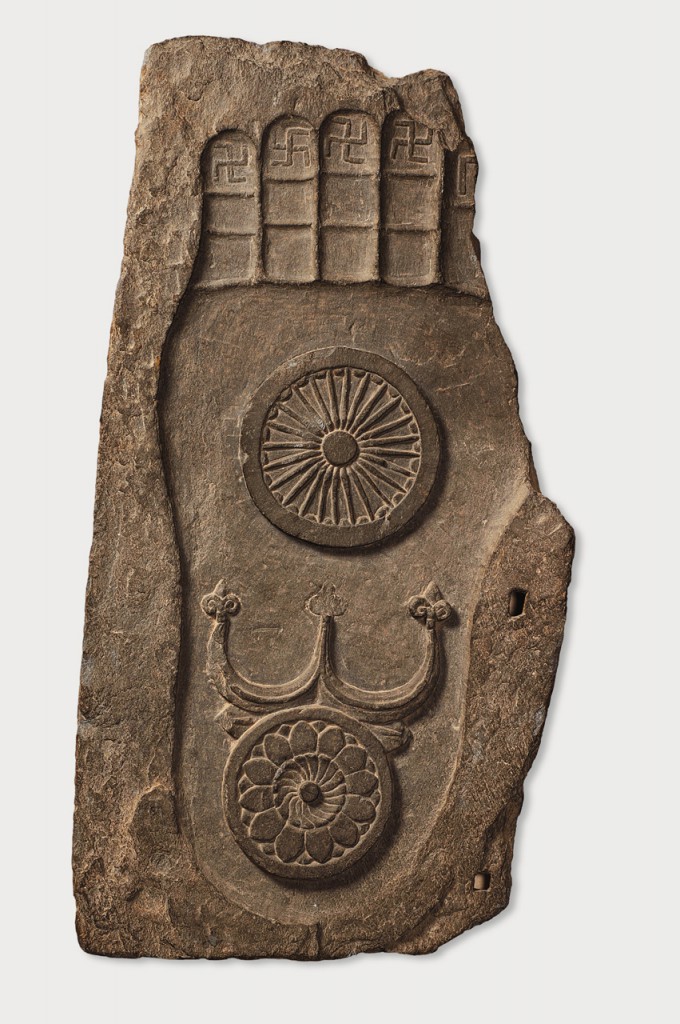
Footprint of the Buddha. Sikri, Khyber Pakhtunkhwa province 2nd–3rd century CE. Schist H. 37 x W. 19 11/16 x D. 1 3/4 in. (94 x 50 x 4.5 cm). Lahore Museum, G-124
The footprint of the Buddha (buddhapada) was one of the earliest symbols used in Buddhist art. It stands for his former physical presence and is an object of profound veneration. The swastikas at the tips of the toes and the omega symbol on the heel are auspicious symbols. The central wheel represents the Buddhist doctrine. The size of the footprint may be interpreted as either emphasizing the Buddha’s divinity or as an indication that this is a buddha from a different era in which everyone was markedly taller.
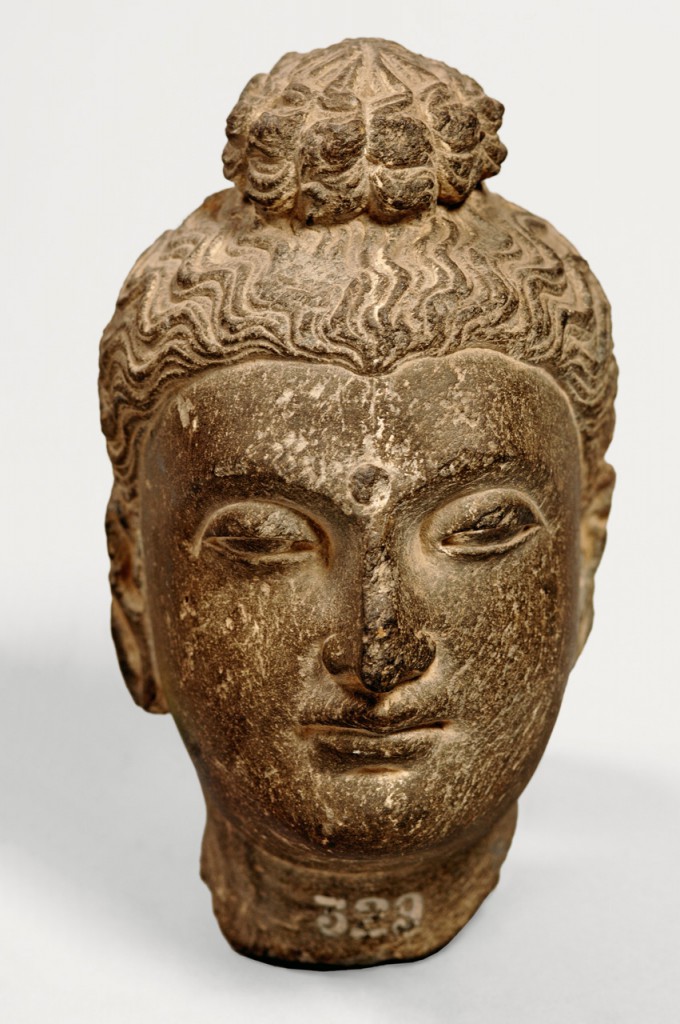
Buddha head 3rd–4th century CE. Schist H. 5 11/16 x W. 3 3/8 x D. 2 15/16 in. (14.5 x 8.5 x 7.5 cm) Lahore Museum, G-174
Although its features are not as prominent as those of the full-sized sculpture of the Buddha, this head of the Buddha shares the typical Gandharan appearance. The almond-shaped eyes are downcast. A lightly incised circle, called an urna, appears between the eyes. The urna was an identifying mark of the Buddha that represented his divine status and his ability to see beyond the mundane realm. His hair is drawn up into a topknot, with particularly playful curls. As with most Gandharan sculpture, this image would originally have been painted and gilded.
This complex carving shows a buddha who has been elevated to a supramundane being. He is surrounded by a buddha-field (buddhakshetra), a realm of influence created by the buddha himself. On the upper right, a buddha seated in the wilderness points out this world to a figure kneeling before him. The central buddha, his hands held in the gesture of teaching, is surrounded by numerous bodhisattvas and a few worshippers.
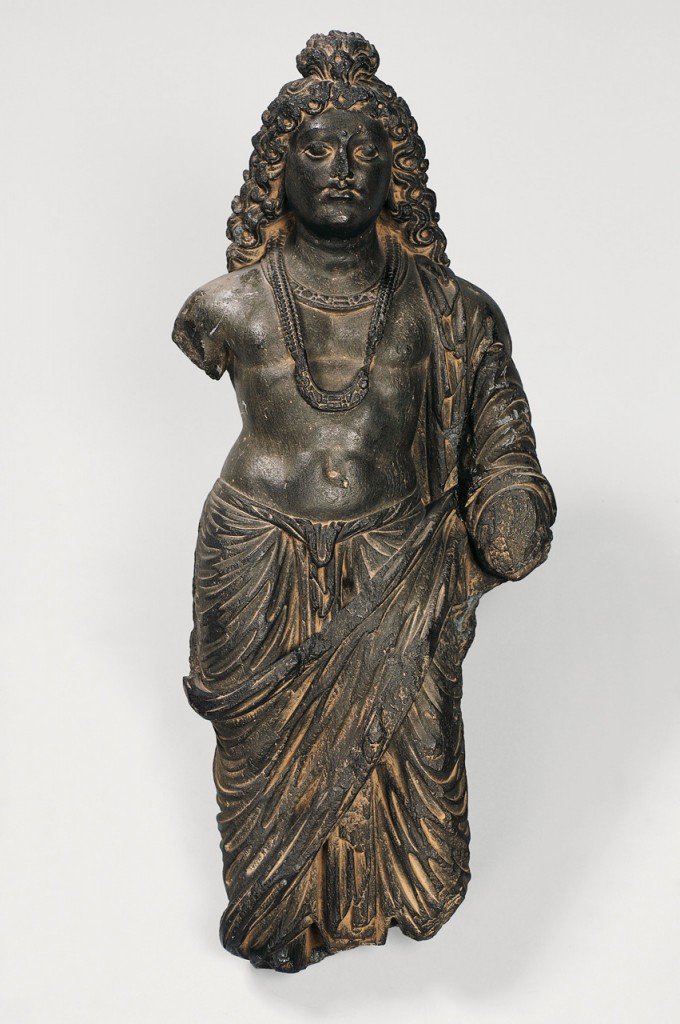
Bodhisattva. From the large stupa at Sahri Bahlol, Khyber Pakhtunkhwa province. First half of the 2nd century CE Dark gray schist. H. 18 1/8 x W. 6 7/8 x D. 3 1/8 in. (46 x 17.5 x 8 cm) Lahore Museum, G-135
None of the Gandharan bodhisattva figures have attributes that easily identify them as Maitreya, the Buddha of the Future. Some scholars, however, believe figures like this one with long flowing curls are very likely representations of Maitreya. The articulated musculature of this second-century sculpture is markedly similar to western prototypes.
This figure of Bodhisattva Maitreya has an elaborate hairstyle held in place by a beaded net, with a crescent moon adorning the top. The pedestal shows an offering of incense being burnt in an enormous censer. Compared to the curly-haired second-century bodhisattva, this and other fourth-century figures show a shifting emphasis towards Indian sculptural ideals. Later Gandharan sculptures like this one have bodies with a sense of breath in the belly and softer physique.


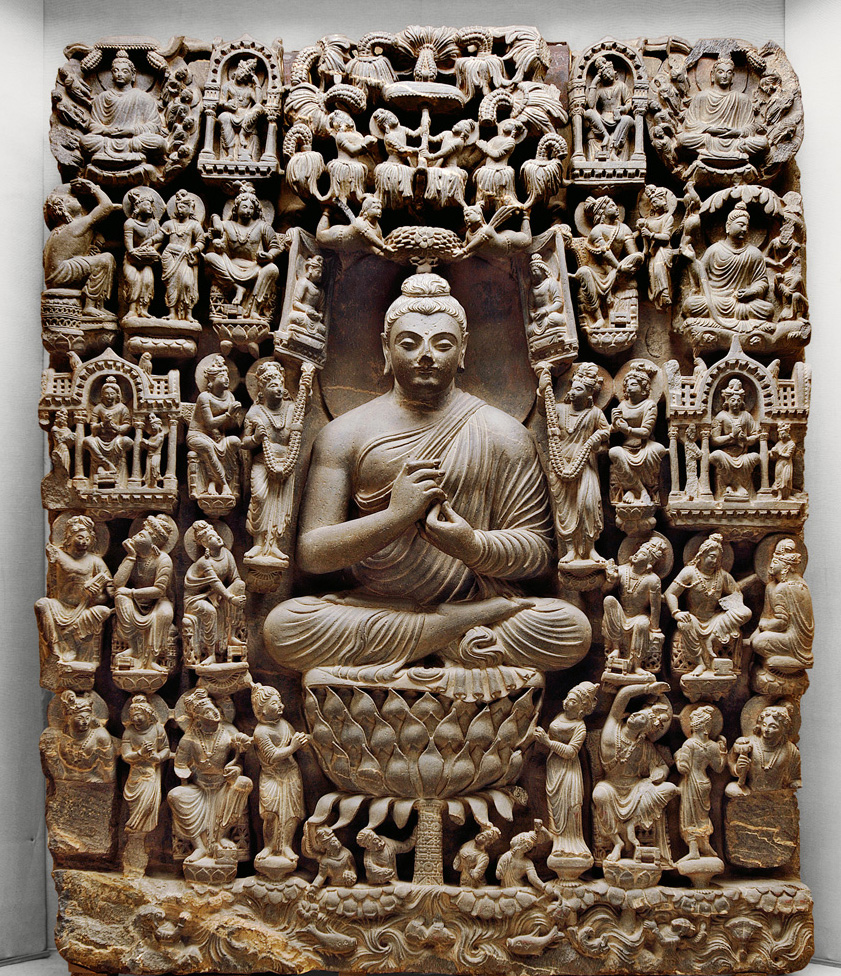
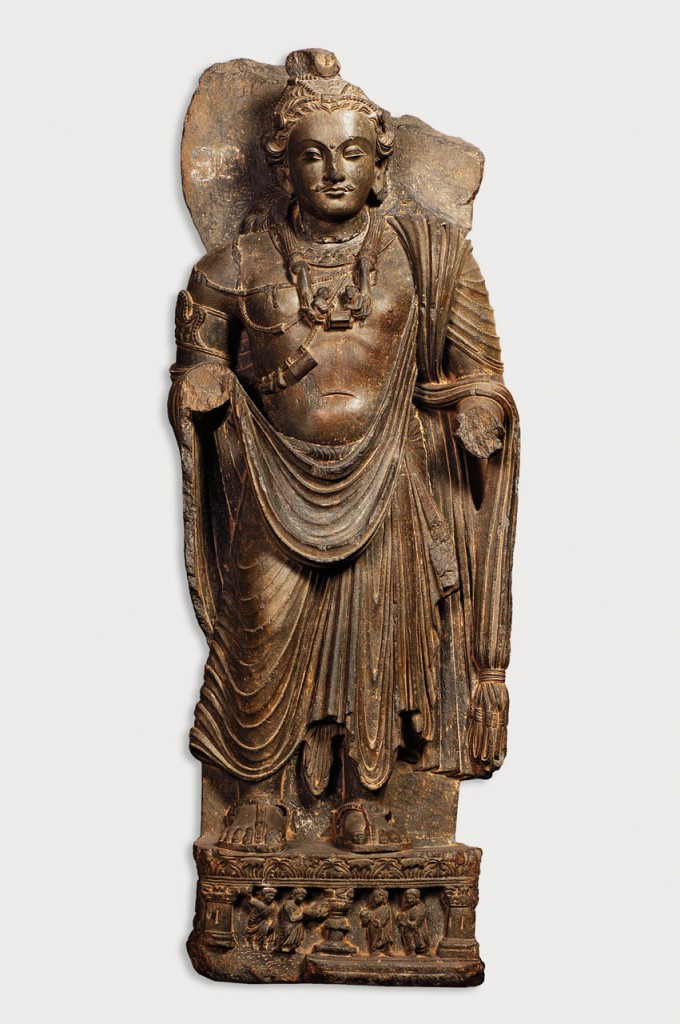
 Share
Share